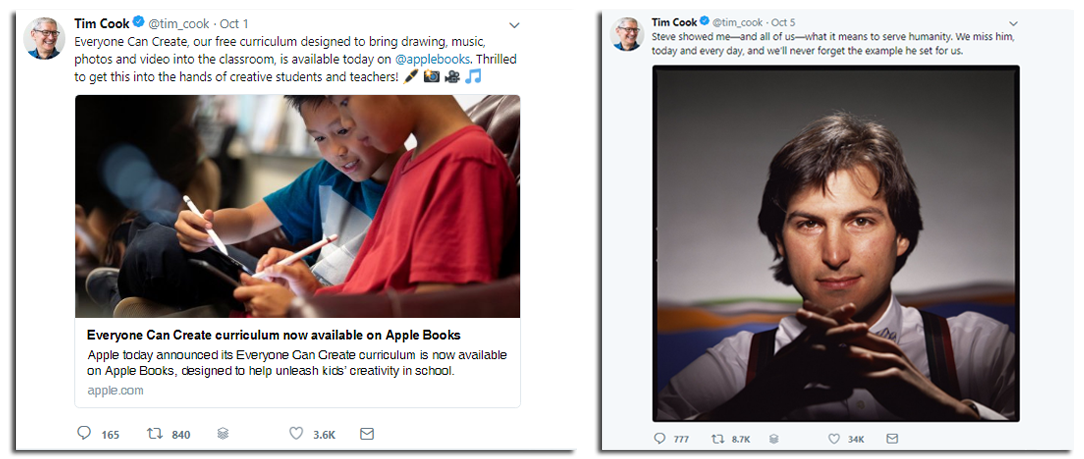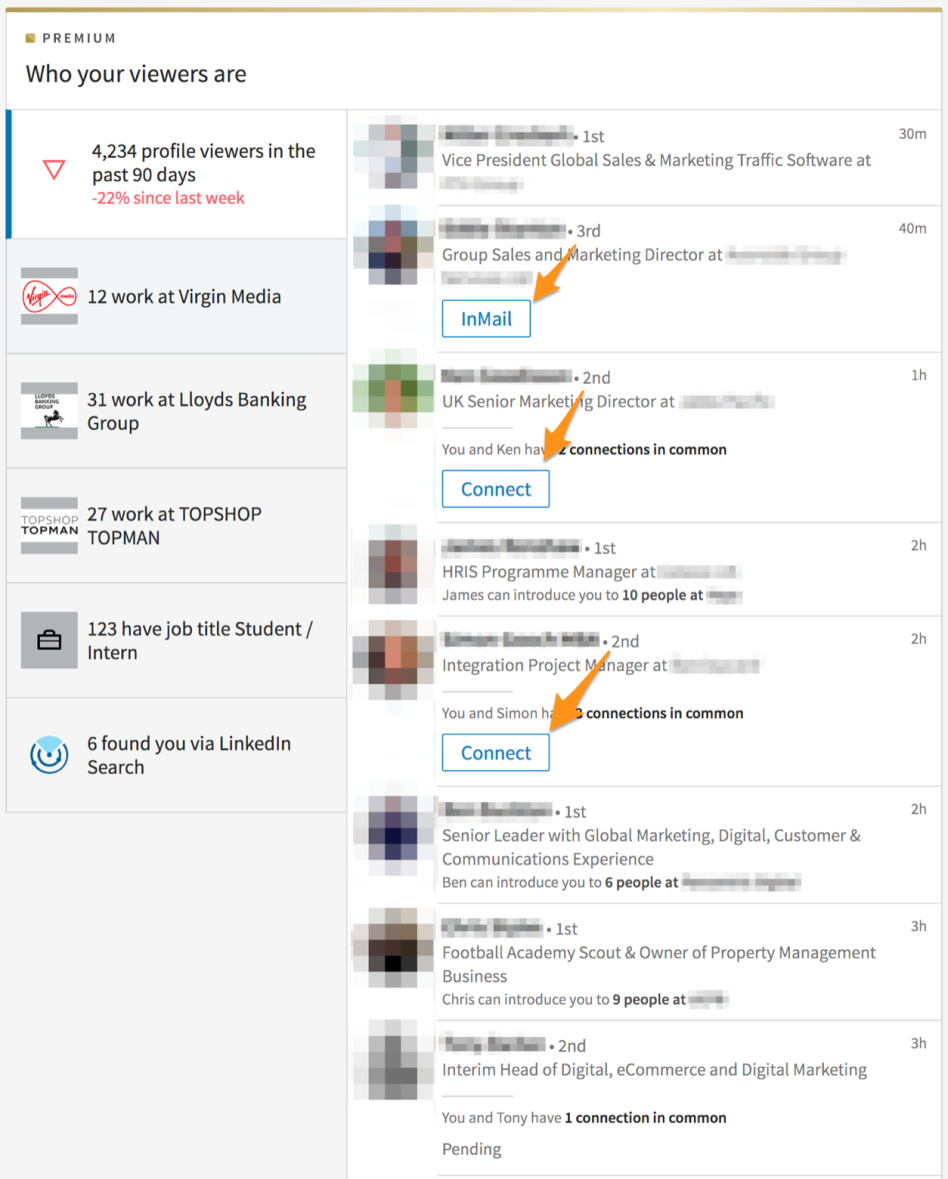
Build Leads and Engage with your Prospects with Social Selling
For many business leaders, connections are more important than ever. These connections can often be with your business partners, suppliers or even those you have (or have yet to make) with your clients and customers. These connections can be very useful for your sales strategy as it allows you to really listen to what you’re clients want; improving your business relationship or setting the foundation for future opportunities. After all, it would be difficult to create a solution for them, if you don’t even understand their needs. When we leverage our social networks to find the right prospects, build trusted relationships, and ultimately, achieve our sales goals, this is known as Social Selling. You may have heard the term, but struggled to find relevance in your day-to-day or business operations. Social Selling is rooted in relevance and value, eliminating the need for sales professionals to perform cold outreach. (LinkedIn 2018)
If you consider that digital channels now influence 92% of B2B buyer decisions (IBM, 2017) then it’s clear that: 1) The modern B2B buyer has changed their behaviour and, 2) it’s time for us, as marketers, business leaders and salespeople to change ours. Still not convinced?
Just look at how much the sales landscape is changing
According to Hubspot, 38% of salespeople say getting a response from prospects is getting harder, and Bumbu states that 33% of users prefer to contact brands using social media rather than making a phone call. But many big business leaders are still slow to adopt social selling as a tactic. Forbes Magazine notes that 61% of Fortune 500 CEOs have no presence on social media at all.
However, a small group of major CEOs are becoming thought leaders in their own industries through social selling to create massive amounts of free PR for their brand. Think Apple’s Tim Cook who, as a regular tweeter, has over 11 million followers.

This is clearly the way for modern business to go as Business.Linkedin.com (2016) states that over 40% of business leaders recently surveyed considered social selling tools to be “very impactful” to their business.
Let’s dive a bit deeper into this. We now know that social selling is a tactic to leverage your social networks in order to find the right prospects, build trusted relationships, and ultimately, achieve your sales goals. But where do you start?
First thing’s first – Who are you online?
You need to look at building your own social profiles so that you are seen as a person of authority on your business. Decide which profile would best suit your target audience and try not to over complicate things. If they are most active on LinkedIn, build yourself in LinkedIn versus trying to get set up on all platforms (Facebook, Instagram, Twitter, etc).
Structure your profile so that it sells your business and speaks in your language (it should be genuine and not forced). It isn’t just a biography or a list if your talents and achievements. This profile will act similar to a website and should therefore represent your brand and answer the burning questions from your ideal prospects.
Could You Be A Thought Leader?
A thought leader is an individual or firm that is recognised as an authority in a specialised field by their industry peers. To achieve this status, there sometimes can be much work to do. You are going to want to start engaging in conversations that are relevant to your business. Find other experts in the field and start getting involved in their conversations. Comment on their posts by adding value to the discussion. Share content and provide your own spin on things.

Connect other people of influence into the conversation by linking them in your content (using the @ within your post). The next level of this is, of course, building your own content, but there is a lot you can do before ever starting to write your own content. The point is to be in the conversation and to stay relevant by maintaining steady interaction – once a day, a few times a week, etc.
Set Your Aim At Your Target Audience
Now that you have established yourself in the social space, you can start prospecting. Ideally, you have already spent some time on assessing who your target audiences are (maybe even broken them into Personas) and you can start to search the social channels for similar audiences to your ideal personas. It goes back to a bit of old school thinking by literally creating a list of companies or brands for you to start searching for. Look at the type of content they are pushing out, or questions they are asking online. You may be able to answer them directly and create a connection, or a softer approach would be to start writing content that addresses those questions and topics.
If you’re using LinkedIn, you can use the Sales Navigator tool to search for industries and positions of interest (i.e. Directors or Managers) to build your list. Try to find 2nd and 3rd connections that allow you a foot in the door to start a conversation.

TIP: Look for life events that you can introduce yourself with. For example, a new job, a new position, a work anniversary. These are all great ways to engage with someone rather than “cold-calling”.
Another Tool In Your Marketing Toolbox
You may have heard the term, Account-Based Marketing (ABM) – a marketing tactic where you approach an individual or customer account and target your marketing efforts directly to them – Social selling is a great way to initiate this style of marketing and to execute it; they basically work hand-in-hand. Social selling will build your authority in the social space and help you build connections or prospects to target with your ABM tactics and then continue to move them through the sales process by continuing the conversation in a more social space.
HubSpot, Senior Marketing Manager, Sam Balter, explains, “Our sales team uses ABM and inbound marketing… They have a set list of target accounts, and use inbound marketing leads to supplement those accounts.”
We have a structured process for social selling which allows us to work through the three main areas of social selling: Building your personal brand, Marketing yourself as an authority in a particular field, and Prospecting resulting in Lead generation and ultimately sales.
Now Is The Time To Get Started!
This may seem like a lot of work because, unlike your other marketing tactics, this is a lot more personal to you and so it requires your own stamp on it. It will be up to you to figure out the ideal amount of time to spend on social selling, but often it can be 15-20 minutes, daily, over a cup of coffee with activities like:
- Keeping up with your Linkedin conversations;
- Revisiting & Reviewing your target audience; and
- Getting familiar with sales navigator & other available tools.
The ability to adapt to the ever-changing sales environment cannot be understated and getting you and your team to practice social selling looks to be a smart choice for business leaders as buyer behaviour continues to change this way. When surveyed, 87% of B2B buyers said they would have a favourable impression of someone introduced through their professional network. (Quora, 2017)
It is also important to note that although somewhat new, many salesrooms have already adopted these techniques. The 2016, LinkedIn “State of Sales” report states that 71% of all salespeople are now using social selling tools. So, if you consider your competitors have already established themselves as social sellers, there really is no better time to start.
Like most digital tactics that work well, it may take some time and energy before you start to see results but once you build this up, you will have a solid social selling system in place to really start gaining leads, converting sales and build lasting business relationships within your network.
Feel free to get in touch with us to find out more about social selling.

Stay Connected